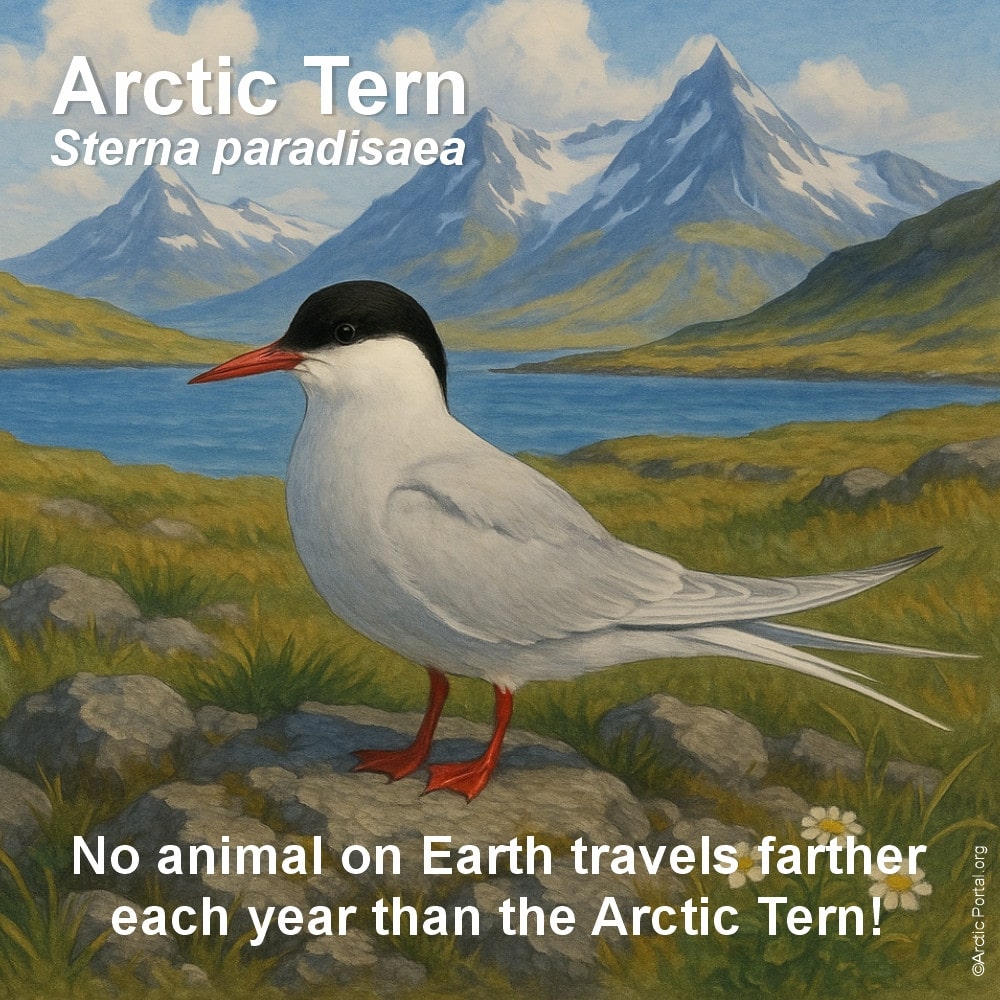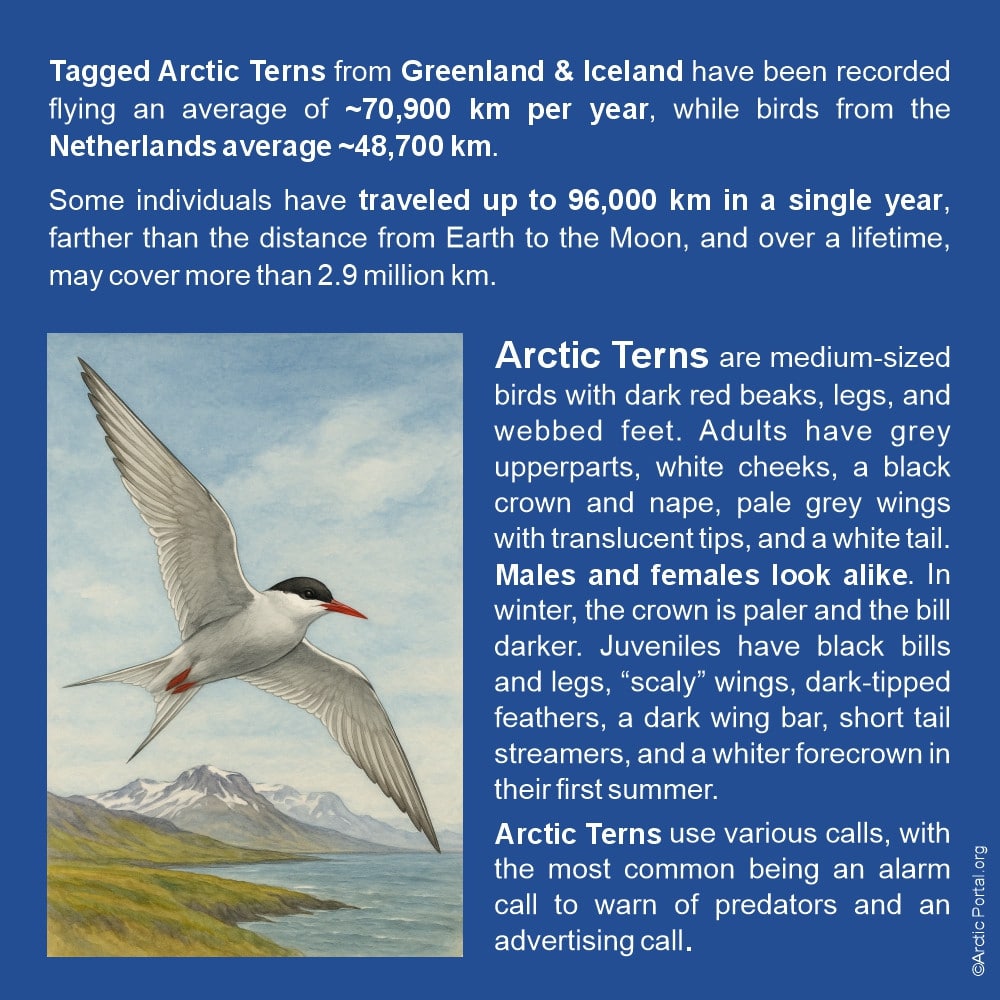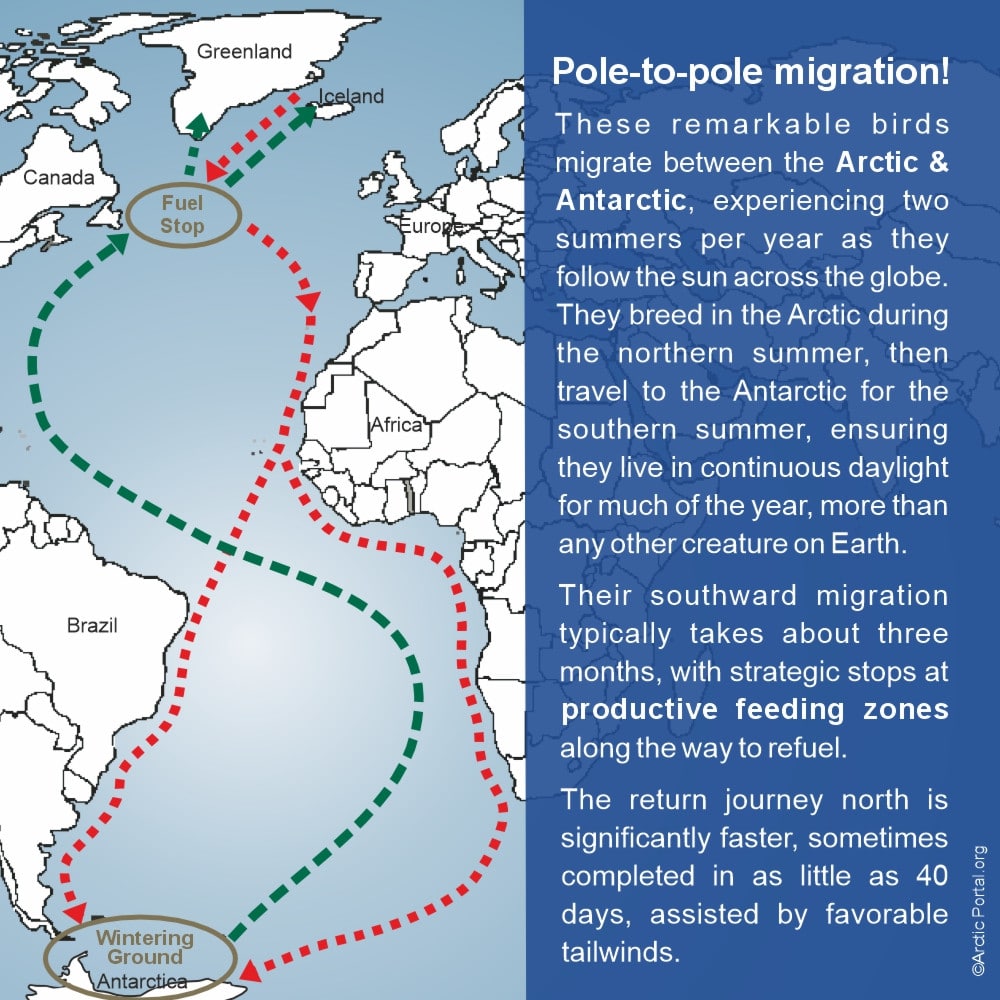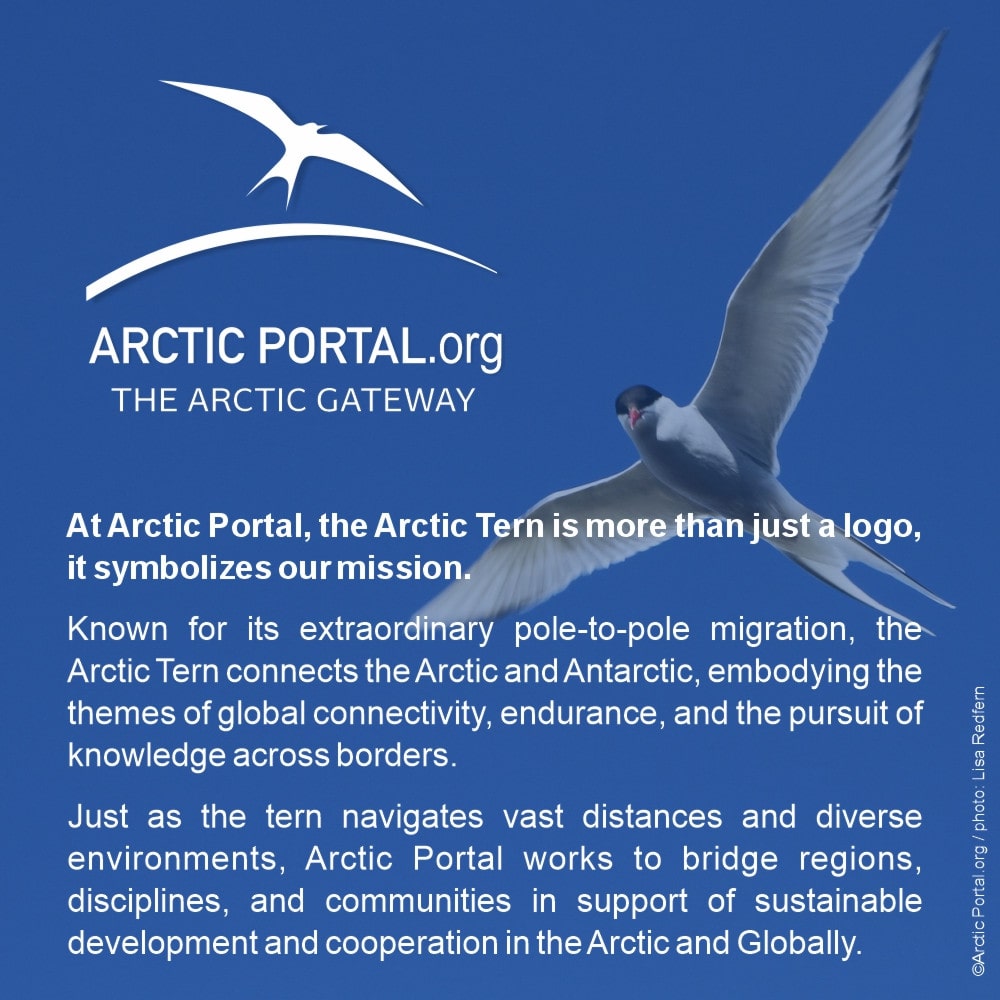Tagged Arctic Terns from Greenland & Iceland have been recorded flying an average of 70,900 km per year, while birds from the Netherlands average 48,700 km.
Tagged Arctic Terns from Greenland & Iceland have been recorded flying an average of 70,900 km per year, while birds from the Netherlands average 48,700 km.
Some individuals have traveled up to 96,000 km in a single year, farther than the distance from Earth to the Moon, and over a lifetime may cover more than 2.9 million km.
Arctic Terns are medium-sized birds with dark red beaks, legs, and webbed feet. Adults have grey upperparts, white cheeks, a black crown and nape, pale grey wings with translucent tips, and a white tail. Males and females look alike. In winter, the crown is paler and the bill darker. Juveniles have black bills and legs, "scaly" wings, dark-tipped feathers, a dark wing bar, short tail streamers, and a whiter forecrown in their first summer.
Arctic Terns use various calls, with the most common being an alarm call to warn of predators and an advertising call.
Pole-to-pole migration!
These remarkable birds migrate between the Arctic & Antarctic, experiencing two summers per year as they follow the sun across the globe. They breed in the Arctic during the northern summer, then travel to the Antarctic for the southern summer, ensuring they live in continuous daylight for much of the year, more than any other creature on Earth.
Their southward migration typically takes about three months, with strategic stops at productive feeding zones along the way to refuel.
The return journey north is significantly faster, sometimes completed in as little as 40 days, assisted by favourable tailwinds.
Breeding
Arctic Terns breed in circumpolar regions, coastal tundra of northern Europe, Asia, Arctic and Canada.
The diagram to the side portrays Iceland.
Arctic Terns nest in colonies on bare ground, often near coasts or lakes, and defend their nests aggressively, dive-bombing predators and even humans if they stray too close.
Arctic Terns typically begin breeding at around 3-4 years old, nesting once every one to three years. Clutch size is usually 1-3 eggs, incubated for 21-24 days; chicks fledge in about three weeks.
Arctic Terns feed mainly on small fish (e.g. sand eels, capelin) and marine invertibrates like krill. They hover above water before plunge diving to catch prey, and occasionally prey on insects during breeding season.
Many Arctic Terns reach 15-30 years old, with recorded individuals living up to 34 years.
Arctic Portal
At Arctic Portal, the Arctic Tern is more than just a logo, it symbolizes our mission.
Known for its extraordinary pole-to-pole migration, the Arctic Tern connects the Arctic and Antarctic, embodying the themes of global connectivity, endurance, and the pursuit of knowledge across borders.
Just as the tern navigates vast distances and diverse environments, Arctic Portal works to bridge regions, disciplines, and communities in support of sustainable development and cooperation in the Arctic and Globally.
Visit our Map Gallery Arctic Portal specializes in creating customized graphical maps that cover a range of significant Arctic topics with global recognition. We are continuously working on new maps and adding them to our Gallery.











